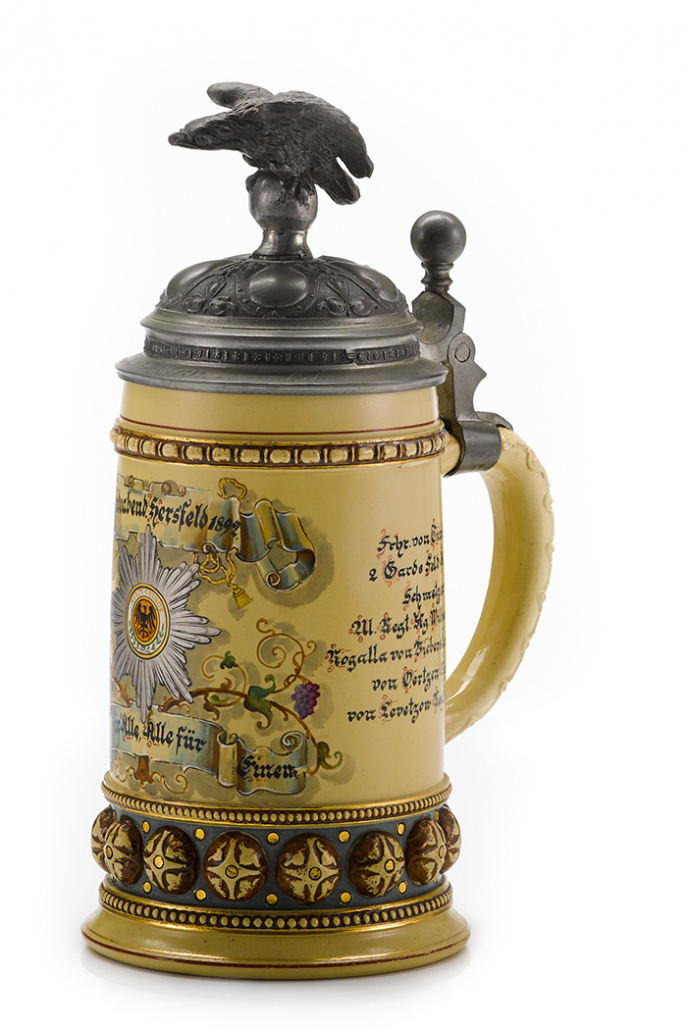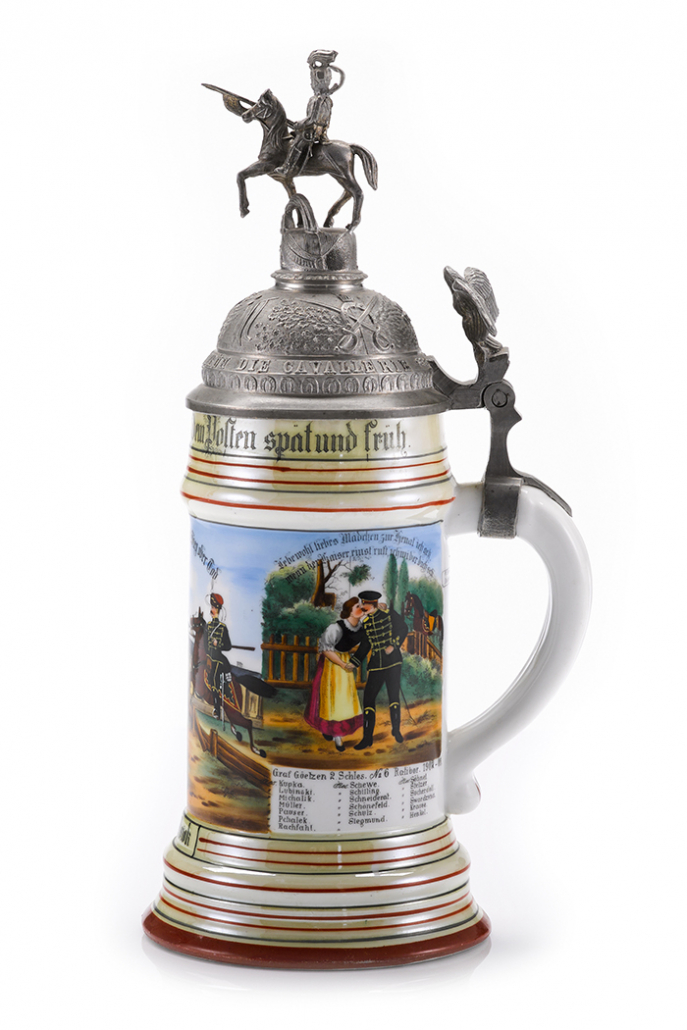The Regimental Steins of Imperial Germany
Historical
Victory over France in the Franco-Prussian War of 1870/71 brought with it an unexpected economic boom for the newly founded “German Empire”.
Alsace-Lorraine was once again part of the German Empire. France’s reparations helped the German Empire became the largest domestic economy in the world. The Imperial German soldiers from 1871 to 1918 were proud to serve the emperor, the empire and the people.
This pride – patriotism even – led many soldiers completing their last year of service to order a memento of their time in the military, their regiment and their comrades, with the individual’s name and rank featuring prominently. As such, each item is one of a kind.
Special dealers sprang up in the garrison towns offering the soldiers a wide variety of keepsakes such as regimental steins, pipes, plates, cups, glasses, etc.
The manufacturers of the regimental steins were predominantly located in the Upper Palatinate, in Thuringia, in Koblenz, in Munich and in the Westerwald region. The steins were made of porcelain, ceramic, glass and tin. Whilst the early regimental steins made of porcelain were often completely or partly hand-painted, mass production soon brought with it a changeover to steel artwork masters, which meant only a minimum of detailing work by hand was subsequently required. Uniforms and crests were still finished with coloured enamel.
The privations they suffered are testament to the importance of the regimental steins for the retiring soldiers – they often had to pay up to a month-and-a-half’s wages for their memento.


